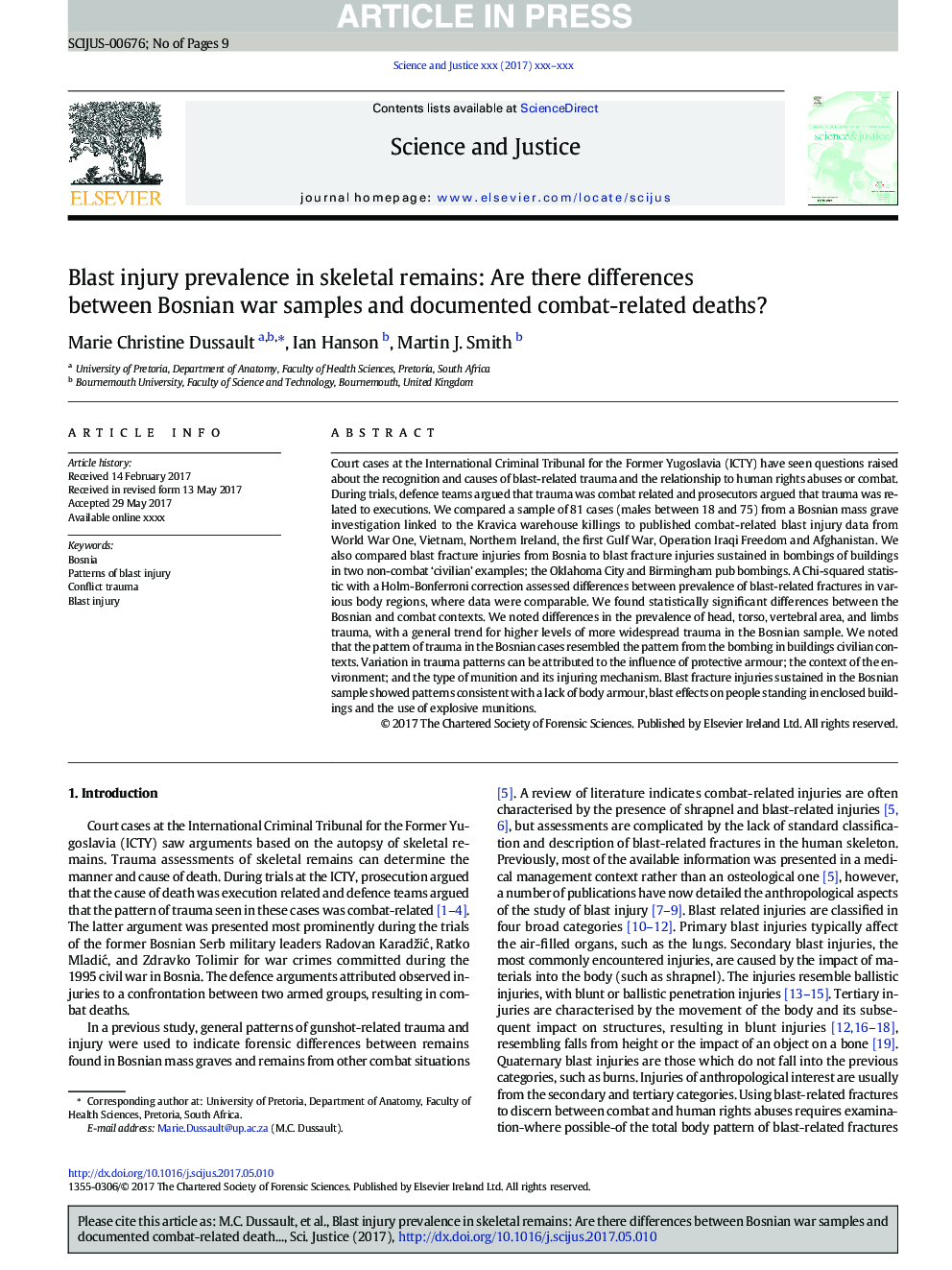| کد مقاله | کد نشریه | سال انتشار | مقاله انگلیسی | نسخه تمام متن |
|---|---|---|---|---|
| 6555958 | 1422501 | 2017 | 9 صفحه PDF | دانلود رایگان |
عنوان انگلیسی مقاله ISI
Blast injury prevalence in skeletal remains: Are there differences between Bosnian war samples and documented combat-related deaths?
ترجمه فارسی عنوان
شیوع آسیب انفجار در باقی مانده اسکلت: آیا تفاوت بین نمونه های جنگی بوسنی و مرگ و میر مرتبط با جنگ ثبت شده است؟
دانلود مقاله + سفارش ترجمه
دانلود مقاله ISI انگلیسی
رایگان برای ایرانیان
کلمات کلیدی
بوسنی، الگوهای آسیب انفجاری، مصدومیت آسیب انفجار،
موضوعات مرتبط
مهندسی و علوم پایه
شیمی
شیمی آنالیزی یا شیمی تجزیه
چکیده انگلیسی
Court cases at the International Criminal Tribunal for the Former Yugoslavia (ICTY) have seen questions raised about the recognition and causes of blast-related trauma and the relationship to human rights abuses or combat. During trials, defence teams argued that trauma was combat related and prosecutors argued that trauma was related to executions. We compared a sample of 81 cases (males between 18 and 75) from a Bosnian mass grave investigation linked to the Kravica warehouse killings to published combat-related blast injury data from World War One, Vietnam, Northern Ireland, the first Gulf War, Operation Iraqi Freedom and Afghanistan. We also compared blast fracture injuries from Bosnia to blast fracture injuries sustained in bombings of buildings in two non-combat 'civilian' examples; the Oklahoma City and Birmingham pub bombings. A Chi-squared statistic with a Holm-Bonferroni correction assessed differences between prevalence of blast-related fractures in various body regions, where data were comparable. We found statistically significant differences between the Bosnian and combat contexts. We noted differences in the prevalence of head, torso, vertebral area, and limbs trauma, with a general trend for higher levels of more widespread trauma in the Bosnian sample. We noted that the pattern of trauma in the Bosnian cases resembled the pattern from the bombing in buildings civilian contexts. Variation in trauma patterns can be attributed to the influence of protective armour; the context of the environment; and the type of munition and its injuring mechanism. Blast fracture injuries sustained in the Bosnian sample showed patterns consistent with a lack of body armour, blast effects on people standing in enclosed buildings and the use of explosive munitions.
ناشر
Database: Elsevier - ScienceDirect (ساینس دایرکت)
Journal: Science & Justice - Volume 57, Issue 6, November 2017, Pages 439-447
Journal: Science & Justice - Volume 57, Issue 6, November 2017, Pages 439-447
نویسندگان
Marie Christine Dussault, Ian Hanson, Martin J. Smith,
